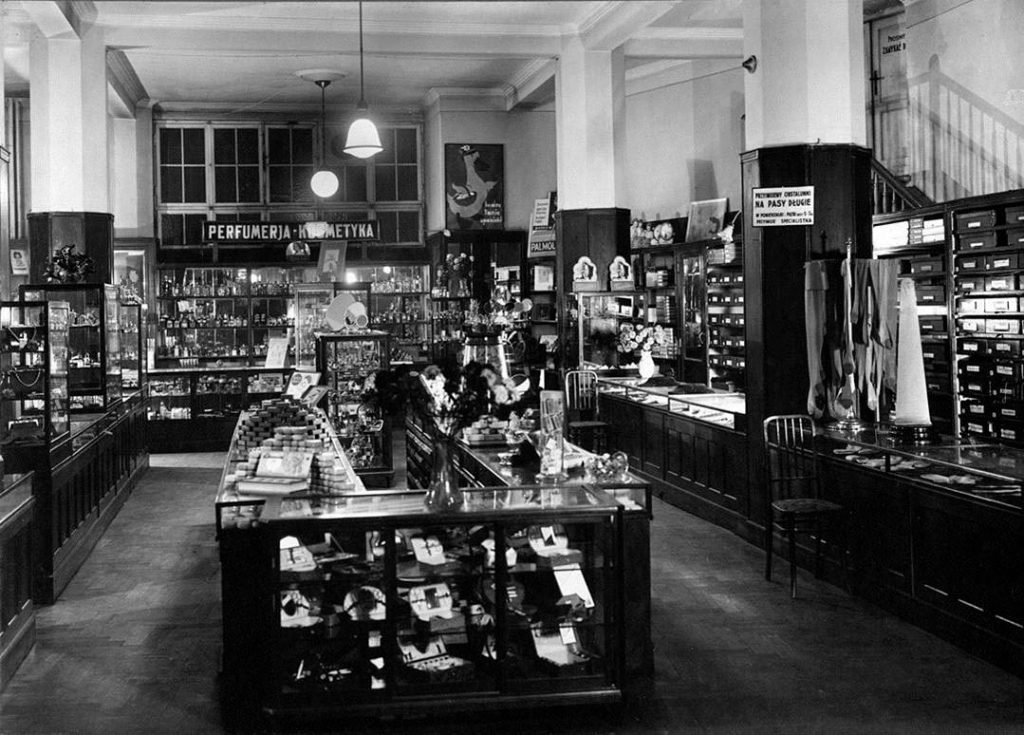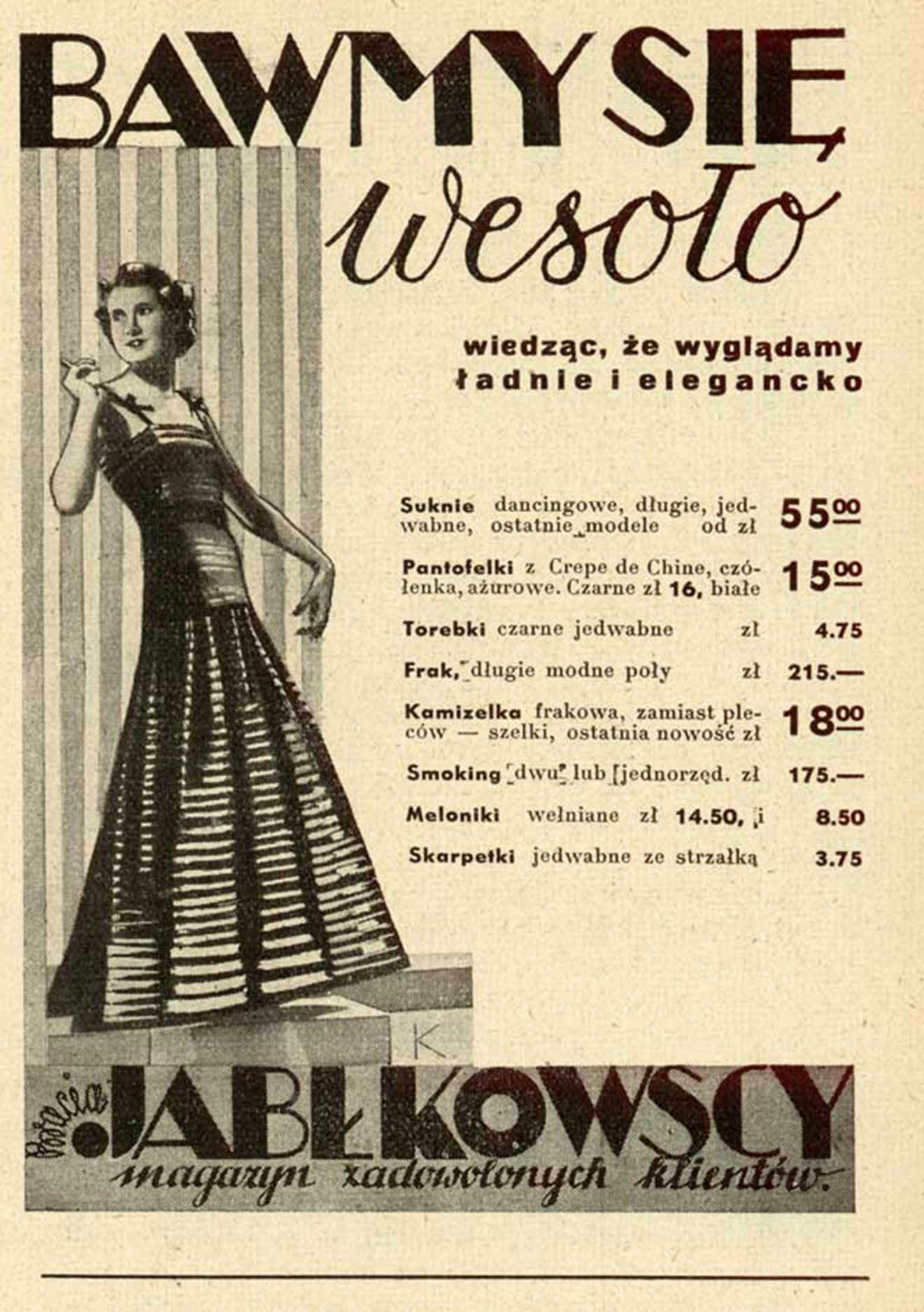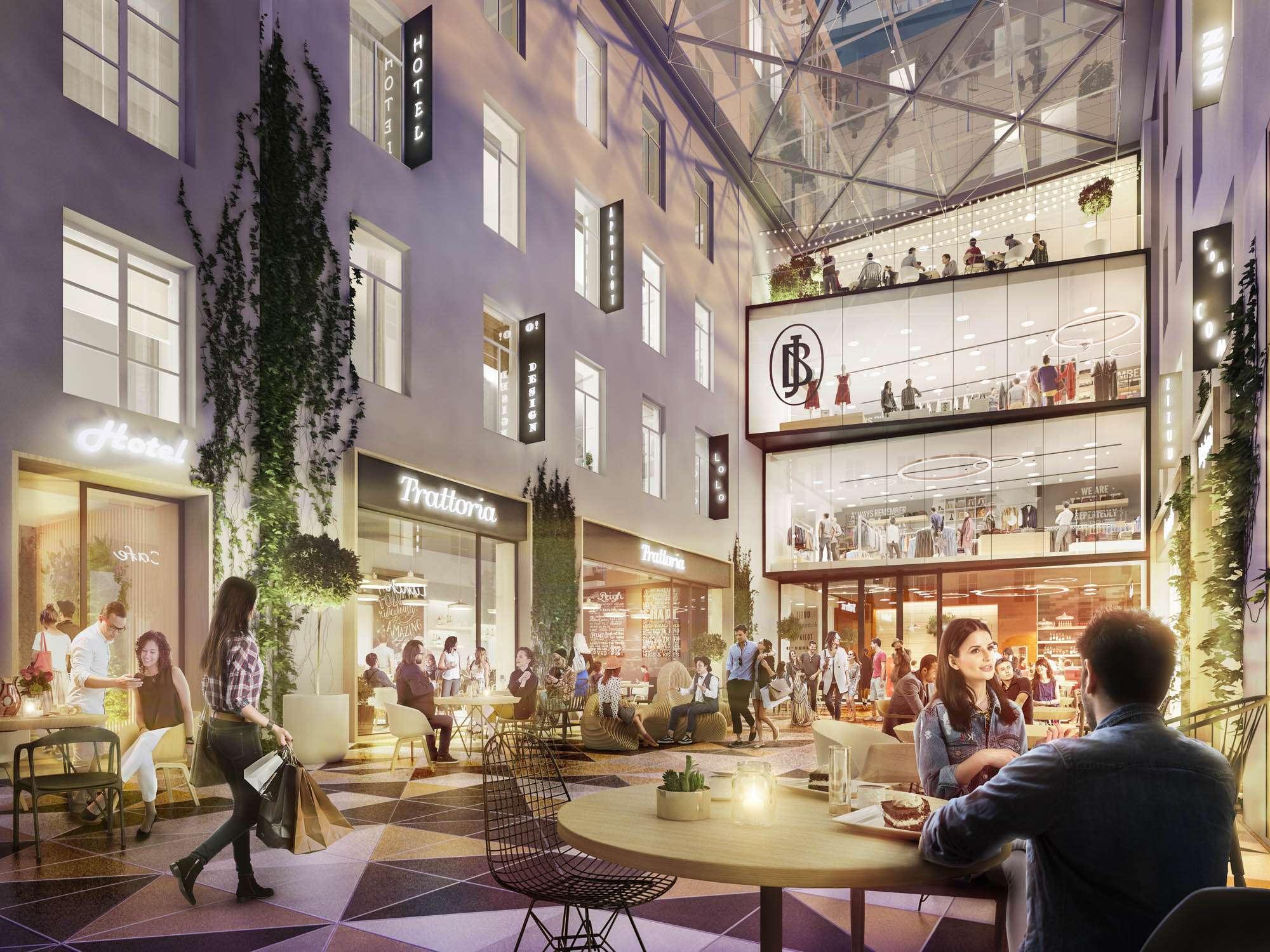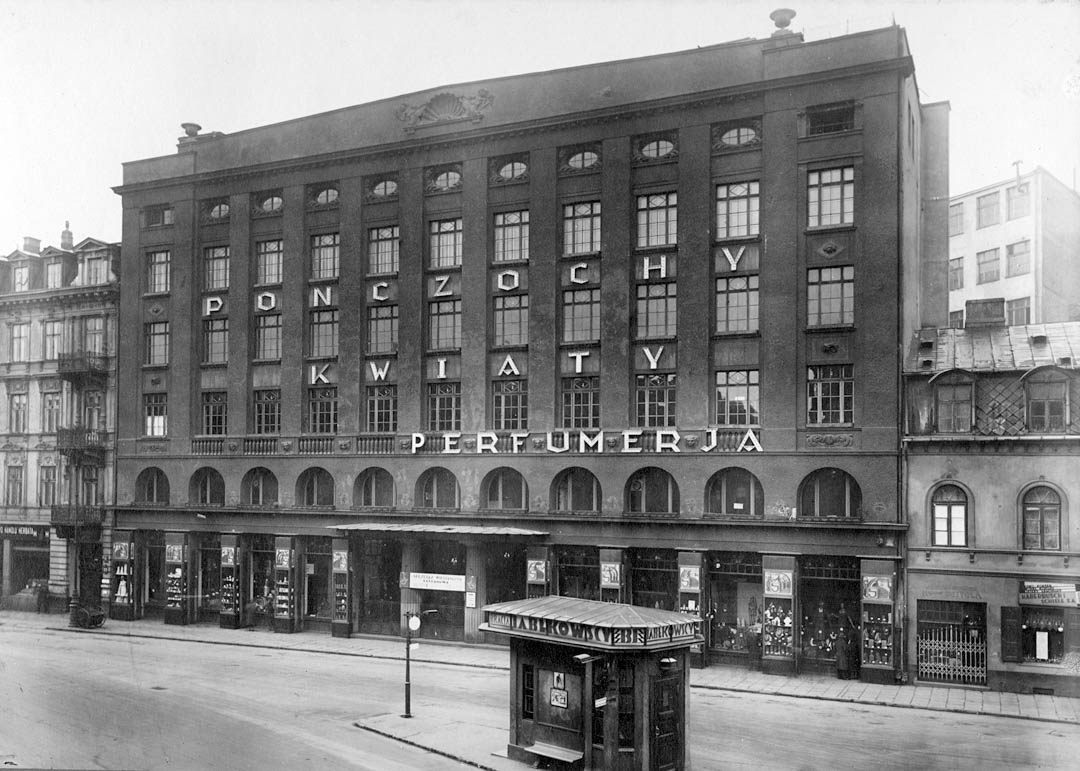The story of the Jablkowscy Brothers Department Store is about so much more than a building.
It was 2013 when the Jablkowscy family finally received the justice they deserved.
After almost 25 years of fighting through the Polish courts, the family whose name has long been synonymous with retail excellence, won back their famous department store.
Standing proudly on Bracka 25 in the heart of Warsaw, the Jablkowscy Brothers Department Store had once been spoken about in the same breath as such celebrated counterparts as Harrods, Selfridges and Galeries Lafayette.
In its 1930s heyday the store employed more than 700 people and was one of the city’s most important institutions, but the course of its history would change dramatically with the outbreak of the Second World War.
Over the next 70 years, the story of the Jablkowscy Brothers Department Store would be one of hardship, nationalisation, redemption and now regeneration – in many ways mirroring the story of Poland itself.
The head of the business today is Jan Jablkowski, whose father was managing director of the store in the 1930s, and he is leading the project to bring the department store back to its former glory and restore its rightful place as one of the jewels in Warsaw’s crown.
“The company had a positive reputation for all those years and people still remember our Department Store,” he said. “Once I was in a taxi and asked the driver to take me to Bracka 25 Street and as I was trying to explain where it was the driver answered – you mean to Jablkowscy Brothers Department Store. This is the biggest value for us.”
The story of the department store can trace its roots back to 1884 when Aniela Jablkowska, the daughter of the family patriarch Jozef, set up a small haberdashery, funded by the newly established family ‘Spojnia’, a system of raising money to support the family’s education, health and other activities.

Jablkowscy Brothers Department Store in its heyday
“The start-up capital of this shop was only a few roubles for which Aniela bought some basic goods,” said Jan. “The only furniture in the shop was an antique chest of drawers and all the goods were kept in it. Thanks to a good economy at that time, the shop developed very fast.”
The shop grew steadily selling a range of goods from bed linen through to women’s clothes and in 1888 Aniela’s brothers joined the company and Bracia Jablkowscy (Jablkowscy Brothers) was born. In 1900 the shop first moved to Bracka Street and then in 1918 the company opened its new five-storey department store at Bracka 25 while also investing in two nearby buildings on Chmielna with a view to future expansion.
Surviving and thriving in the war years
After a period of hardship in the years that followed the Great War, the company started to slowly rebuild and also opened a sister store in the Lithuanian capital Vilnius. Under the stewardship of Jan’s father Feliks, the Jablkowscy Brothers Department Store became the biggest
in Poland.
Jan said: “From the beginning my family was focused on the long term – building its business and its relationship with its customers. The most important customers for the company were children – they were always treated very seriously and the idea was that if the child was happy, the mum was also happy. Hopefully the child one day would also grow up and become a client of the store.”

Jablkowski department store poster
The Jablkowskis were light years ahead of their competitors in terms of understanding their customers and building a brand that would keep their customers coming back again and again.
“We had a children’s theatre so mothers could leave their children and do some shopping,” said Jan. “We also sent out catalogues to our clients, we sent out Christmas cards and organised theme weeks like white week or holiday week – the kind of initiatives you might see shops doing today but we are talking about 100 years ago.
“My father used to tell me that a customer complaint was an opportunity to build a new relationship – by treating them with respect and giving them the best service, the company was also giving them a reason to come back.”
In 1924, an ‘association of the employees’ was established and given space in one of the nearby Chmielna buildings to organise and co-finance the free time activities of the employees. There was a sports section, training courses and a ‘mother and child’ care station, which is today’s kindergarten.
“Employees were always very important to the company. In the old notes of my father, they were described not as employees, but as associates,” said Jan. “From 1943, there was a tradition that each Sunday after Easter there was a mass in the church for employees and their families and it continued for many, many years. I remember as a child, I used to take part in these masses and there were hundreds of people in front of this church.”
When the Second World War broke out, the store was closed and later reopened, but the sale of goods was rationed. “For that whole war period it was a game to survive and not be taken over by the Germans,” said Jan. “The main goal for the company at that time was to support employees – not only from an economical point of view, as documents confirming their employment in the store were security in case someone was caught by the Germans.
“The company also had a secret fund to buy the freedom of employees caught by the Germans. During the Warsaw Uprising in 1944 the department store also supplied clothes, shoes and other goods for the insurgents.”
A battle for the future of the Jablkowscy Brothers Department Store
Miraculously the building at Bracka 25 escaped relatively unscathed as much of Warsaw was razed to the ground and many of its original features including a ceremonial staircase and large stained glass windows remain to
this day.
After the war, the store opened again briefly only to be nationalised as the Iron Curtain fell – starting a 63-year battle by the family to get back the business that had been the fruits of the blood, sweat and tears of two generations of the Jablkowski family.
Jan said: “When we started the process of getting back our properties, not many believed we could win. But we never had any dilemma as to whether we should do it or not – it was our duty to the past generations of our family.
“There is something very typical about family businesses, which distinguishes them from the big corporations. Once I heard a lecture given by a member of the Association of Family Businesses and he said the quarter for the corporation is three months but a quarter for a family business is 25 years, as this is more or less the period of a generation and we think in terms of the next generations.”
Since finally winning back ownership of the department store in 2013, Jan has been plotting a new chapter in the history of the Jablkowscy Brothers and approached Broadway Malyan to transform the historic department store into a unique retail and food destination, linking the store with the building next door on Chmielna.
“Linking these two buildings refers to the plans, which my family had many years ago, when the company first bought the properties on Chmielna with the idea to develop the original department store but that was stopped by the start of the war.
“Today’s retail is something different, mainly dominated by shopping centres, so the company has to combine the best retail tradition with today’s market requirements. The final version of the project in terms of tenant mix, sizes of the shops and so on is a very big challenge.
“We have to consider today’s market and its needs but we will never forget the tradition of the original department store, where we have come from and the principles that have helped us get here today.”

The new urban walkway linking the former Jablkowski department store with the neighbouring building on Chmielna
A new future for this iconic Department Store
The current DTBJ project is a great opportunity to create new value and reposition this fantastic building more than a century after it was first constructed in 1914.
Our approach originates from the early aspiration of the Jablkowski family to create a department store on the larger plot that finally unites the main department store at Bracka 25 with the adjoining properties on Chmielna.
At the heart of the scheme will be a new urban passage that will link Chmielna and Bracka street and create a new meeting place for the city.
A vibrant gastronomy offer within this new space will inject new life into the development while providing increased footfall for the retail offer on the floors above. The boutique hotel and offices on the upper levels will contribute further to the creation of a truly mixed-use destination in the centre of Warsaw.
The project comes with a range of design challenges as we navigate the competing requirements of a modern retail facility with the constraints of a building with such an important heritage.
We have worked hard to embrace the magnificent interiors, especially the atrium, to enhance the atmosphere of this early modernist building and create a unique and memorable experience for future visitors and users.
The open courtyard in the second property on Chmielna will be used for an extension on three floors and will be covered with a glazed roof to create a spill out space for cafés and restaurants that is bathed in natural light. The larger open portal to Chmielna street will create an entrance to this area which will act as large scale vestibule to the historic building.
The other challenges were associated with the introduction of the new basement in the courtyard, new ventilation requirements for gastronomy units, the addition of the modern ventilation and air-conditioning to tight spaces as well as designing the new escalators into the existing structure, all without compromising the original fabric of the buildings.
However, while the project has offered a range of challenges, the opportunity to continue a project first initiated more than 100 years ago and to create a new chapter in Warsaw’s history makes it one of the most satisfying we have ever been
involved in.
Robert Kaminski, Director of Architecture, Broadway Malyan.

